Submitted by WA Contents
Flat-packed refugee shelter wins Best Design of 2016 by Design Museum in London
United Kingdom Architecture News - Jan 31, 2017 - 10:45 12761 views
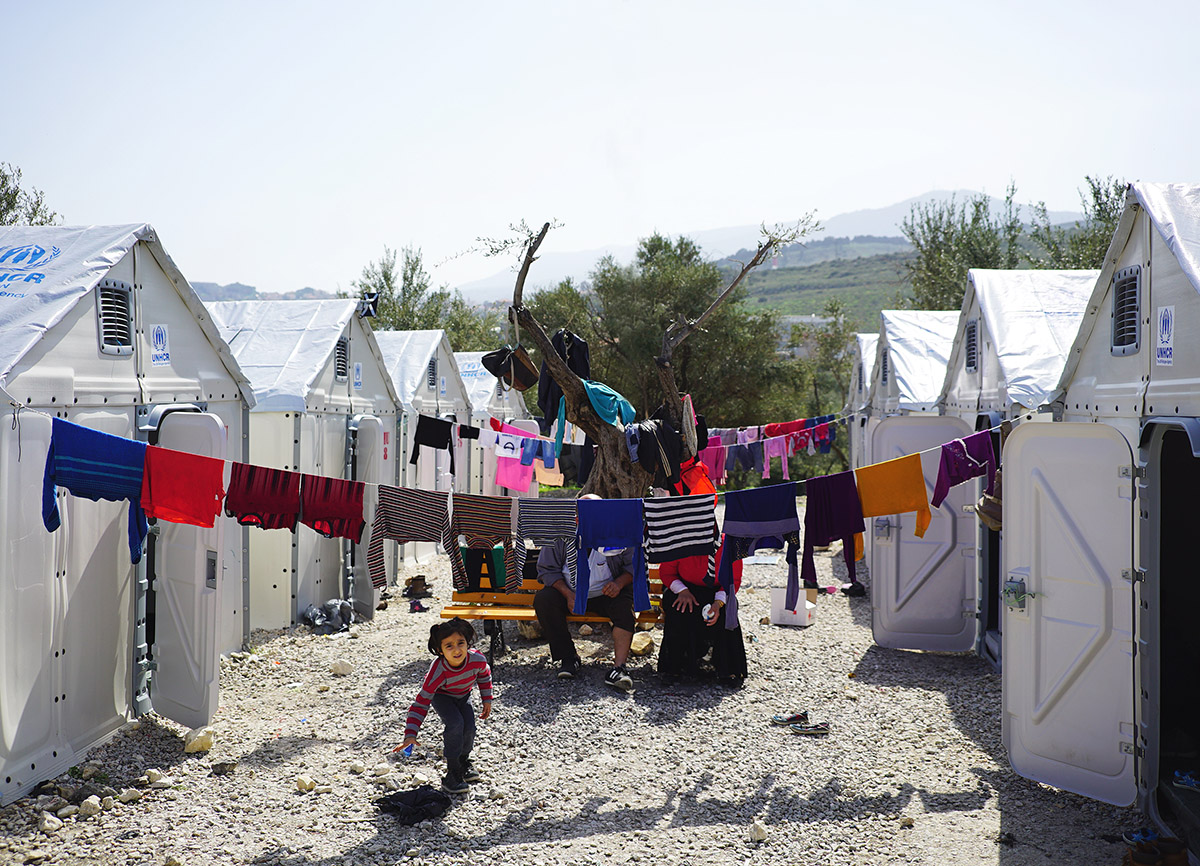
IKEA Foundation and UNHCR's refugee shelter has been named the 2016 Beazley Design of the Year by Design Museum in London, selected as the winner of Architecture category. Designed by Johan Karlsson, Dennis Kanter, Christian Gustafsson, John van Leer, Tim de Haas, Nicolò Barlera, temporary refugee shelter gives a response towards the global issue of population displacement.
Other winners on the night include a robotic surgeon and the design of David Bowie's last ever album. Now in its ninth year, the award was presented at an exclusive dinner held inside the stunning central atrium at the Design Museum’s new home in Kensington.
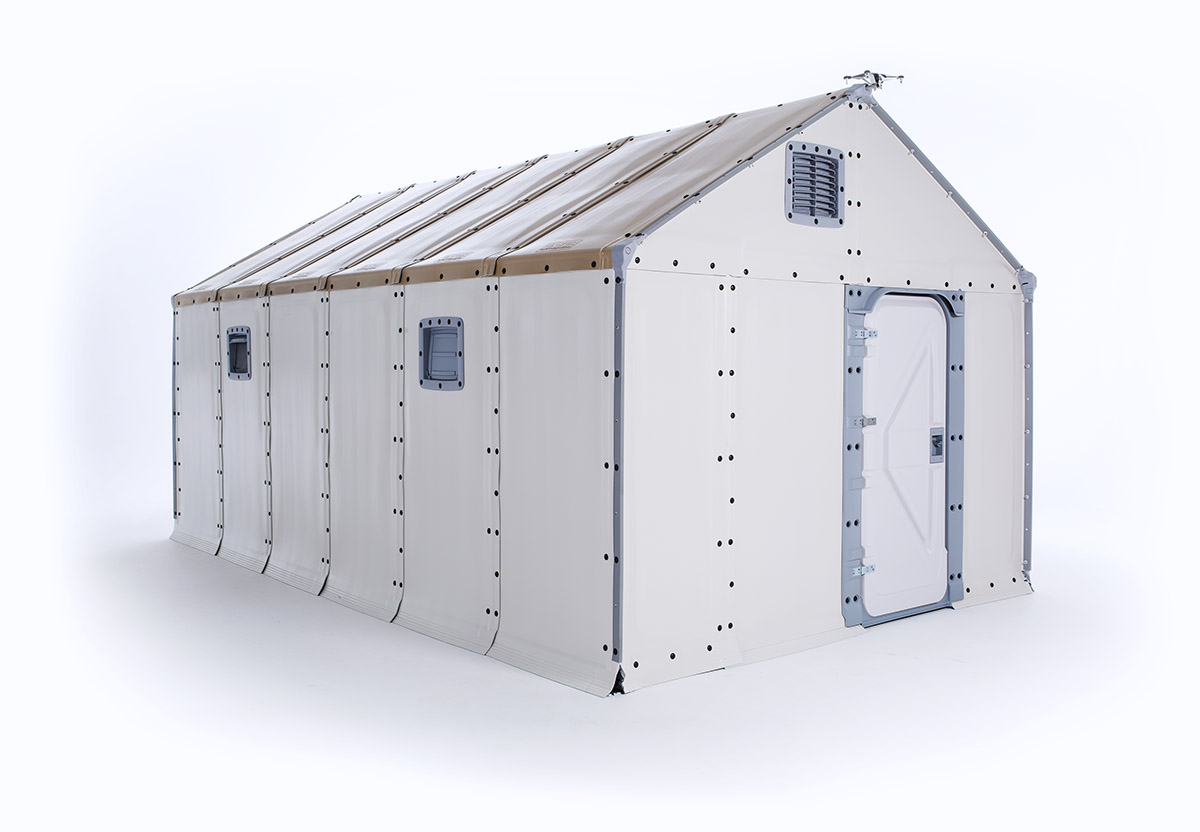
Better Shelter unit. Image © Jonas Nyström
Selected as the winner of the Architecture category, the Better Shelter pipped the five other category winners to claim the overall prize. Better Shelter is a social enterprise bringing design industry innovation to emergency and temporary shelter. The project has developed safer, more dignified homes for those who have been displaced due conflict and natural disasters.
Featuring a lockable front door and a solar powered wall, the shelter utilises flat-pack technology used in furniture design and has repurposed it to create a shelter that can be easily assembled and transported. Flat-packed in a two-box kit along with all the required tools, the shelter is easily assembled in about four hours. The photovoltaic panel provides enough energy to power the supplied light or to charge a mobile phone. 30,000 Better Shelters’ are already in use around the world and the judges chose Better Shelter as a clear demonstration of scalable design that has the ability to make a worldwide impact.
''Better Shelter tackles one of the defining issues of the moment: providing shelter in an exceptional situation whether caused by violence and disaster. Sadly, we have seen many instances recently where temporary shelter was necessary. Providing not only a design but secure manufacture as well as distribution makes this project relevant and even optimistic'', said Dr Jana Scholze, Associate Professor, Curating Contemporary Design, Kingston University.
''It shows the power of design to respond to the conditions we are in and transform them. Innovative, humanitarian and implemented, Better Shelter has everything that a Beazley Design of the Year should have''.

OpenSurgery - domestic surgery theatre. Image © Juuke Schoorl
Open Surgery is the winner of Digital category -was developed as a graduation project at the Design Interactions department of the Royal College of Art (London UK, 2015). The initial concept originated from the Healthcare Futures Workshop at the KYOTO Design Lab (D-Lab) at the Kyoto Institute for Technology (Kyoto JP, 2014).
OpenSurgery, created as a graduation project at the Royal College of Art, claimed the Beazley Digital Design of the Year. Selected for demonstrating 'a tipping point’ in our relationship with technology, the project was created in response to uninsured Americans posting videos on YouTube and performing minor operations and medical hacks on themselves and others. The Robotic Surgeon proposes an alternative do-it-yourself robot. By combining 3D printing with laser cutting technology hacked with surgical equipment bought online, the machine theoretically could be replicated at a fraction of the cost of professional surgical care.
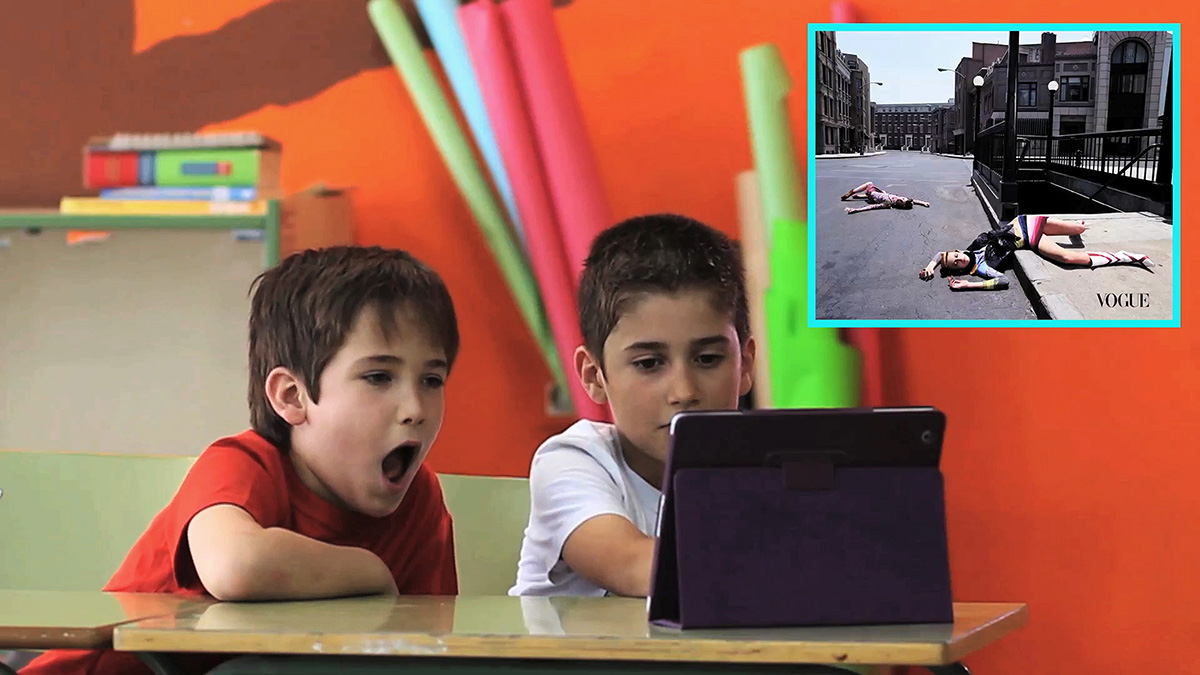
Still from the video Kids vs. Fashion. Image © Yolanda Dominguez
In the Fashion category, Children vs. Fashion it was a video exploring advertising that won the award- designed by a group aged 8 kids from CEIP La Rioja School, Madrid, Spain. Children vs Fashion asked a group of eight year olds in Madrid to provide their thoughts on an element of fashion advertising the portrayed gender imbalance. Offering the uninhibited viewpoint of a child, the project exposes the negative impact of a selection of advertisements and how the focus is removed from the clothes that they are intended to promote.
''The Children vs Fashion project provides a provocative and fun commentary in the Fashion category. It asks straight forward critical and uncomfortable questions regarding styling, imagery, role models, audience, responsibility and mediation. Such valuable questions initiate self-reflection and debate that are not just relevant for fashion but design practice in general. They re-define the place and function of design in the world today. As such, this film stood out for all of us'', said Dr Jana Scholze, Associate Professor, Curating Contemporary Design, Kingston University.
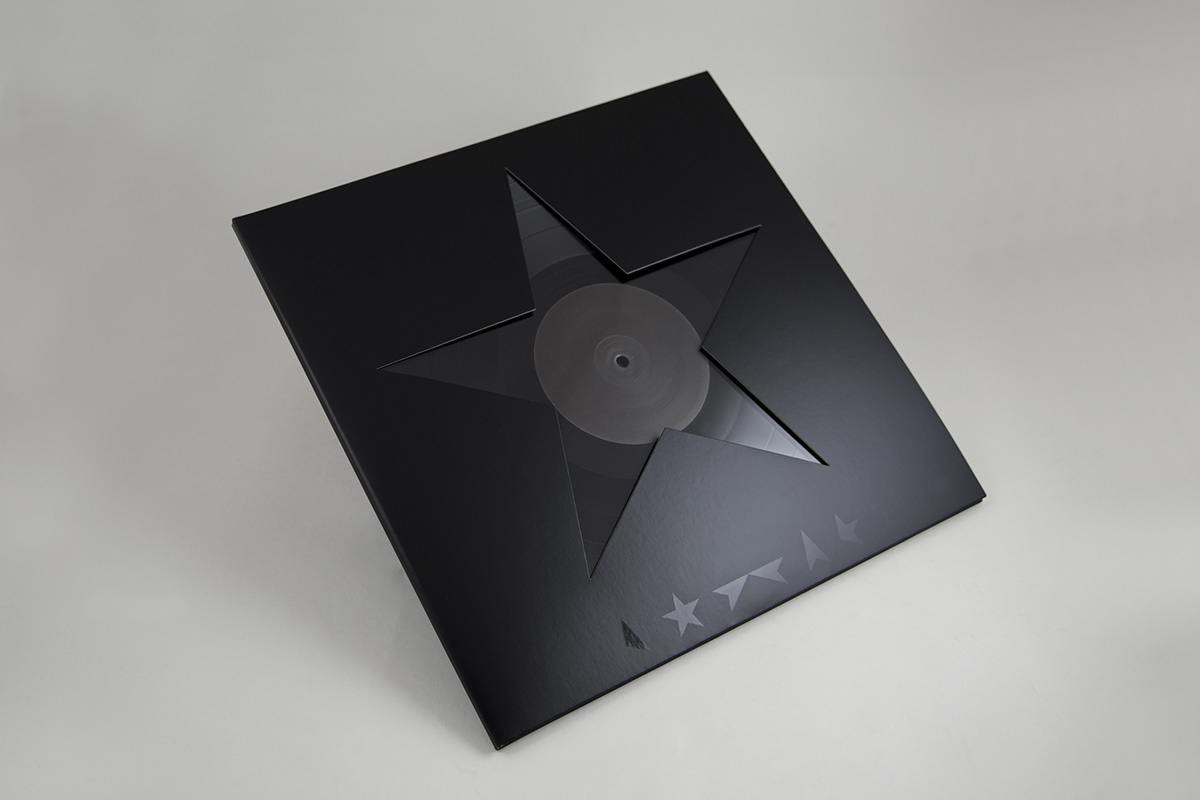
Cover used for digital and CD. Image © Barnbrook
In the Graphics category, pronounced Blackstar designed by Jonathan Barnbrook at Barnbrook for David Bowie/Sony Entertainment Inc. received the Beazley Graphic Design of the Year.
Designed by Jonathan Barnbrook, the Unicode Blackstar symbol created a simplistic identity that let the music take centre stage but also created a design that’s easy-to-recognise and share. Designed using open source elements, the artwork for the album became open-sourced itself following Bowie's death enabling fans to engage and interact with the symbols.
''The Graphics category caused heated debate among the jury. Are we looking for impact, creativity, popularity, significance, timeliness? The Blackstar design is an iconic piece of graphic design that defined an important moment in musical history. It has the ability to connect with an audience and demonstrates the power that music and design has to connect and unite people'', said John Morgan, Founder of John Morgan Studio.

Astronaut Cristoforetti imbibes the first esspresso in space. Image © Samantha Cristoforetti (ESA NASA)
A coffee cup used by astronauts was awarded the Beazley Product Design of the Year. The Space Cup was designed and developed using scientific results of experiments conducted aboard the International Space Station.
The cup is designed to exploit passive capillary forces to replace the role of gravity to create an earth-like drinking experience in the low-gravity environment of space. Sealed drink bags are normally sipped through a straw to avoid spilling in space. The Space Cup however uses surface tension, fluid wetting properties, and a unique shape to drive the liquid toward the astronaut’s mouth whilst drinking from an open cup.
Designers include Mark Weislogel- Innovator (IRPI LLC/Portland State University), Andrew Wollman-Designer (IRPI LLC), John Graf-Co-Investigator (NASA Johnson Space Center), Donald Pettit-NASA Astronaut Innovator (NASA Johnson Space Center) and Ryan Jenson- Sponsor (IRPI LLC).
''A coffee cup for astronauts says it all. The perfect collaboration of design and tech to make anything possible no matter where you are, or even what gravitational field you are in. It may be a lot of work for such a small product but it will make the world of difference for those that are so far from home'', said Loyd Grossman, Broadcaster.
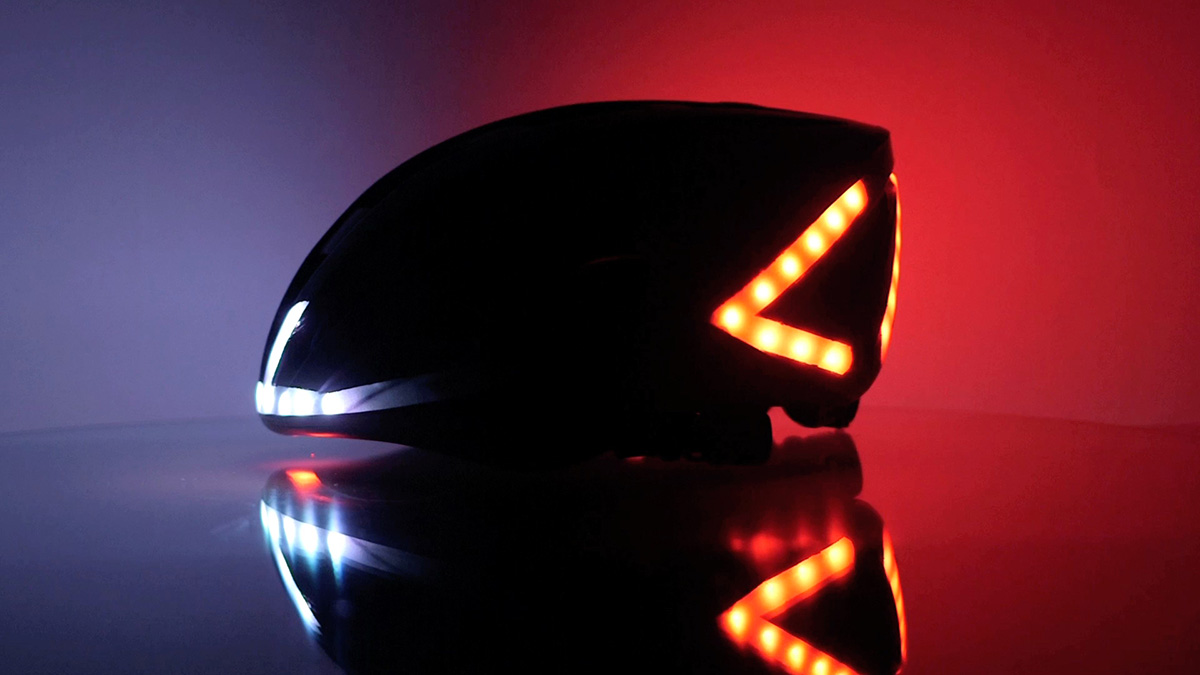
Lumos Helmet - Left Turn Signal. Image © Max Wagenblass
Lumos, the world's first smart bicycle helmet with integrated light signals, completed the category winners by being named the Beazley Transport Design of the Year-designed by Eu-wen Ding - Co-Founder & CEO, Jeff Haoran Chen - Co-Founder & CTO. With a built in accelerometer Lumos detects when you're slowing down and automatically displays a brake light and turn signals.
In August 2015, Lumos Helmet blew past its funding goal of $125,000 USD to raise over $800,000, making it the highest funded bicycle helmet campaign in crowdfunding history.
''The Transport category is usually occupied with grand schemes for planes, trains and automobiles but something as simple as a helmet that helps cyclist to become more visible and safer is just as important. Transport is not only about city-defining projects that are 20 years in the making; it's about the everyday experience of commuters as well'', said Marcus Fairs, founder and editor-in-chief of Dezeen.
The six category winners along with the further 70 other nominations are on display at the Design Museum until 19 February. Now in its ninth year, Beazley Designs of the Year celebrates design that promotes or delivers change, enables access, extends design practice or captures the spirit of the year.
The annual award and exhibition curated and hosted by the Design Museum in London has included previous winners such as the London 2012 Olympic Torch and the Barack Obama Hope poster.
Last year, Human Organs-on-Chips by Donald Ingber and Dan Dongeun Huh at Harvard University’s Wyss Institute was awarded the 2015 Beazley Design of the Year.
Top image: Better Shelter units in Kara Tepe transit site, Mytilene, Lesvos, Mar 2016. Image © Märta Terne
> via Design Museum